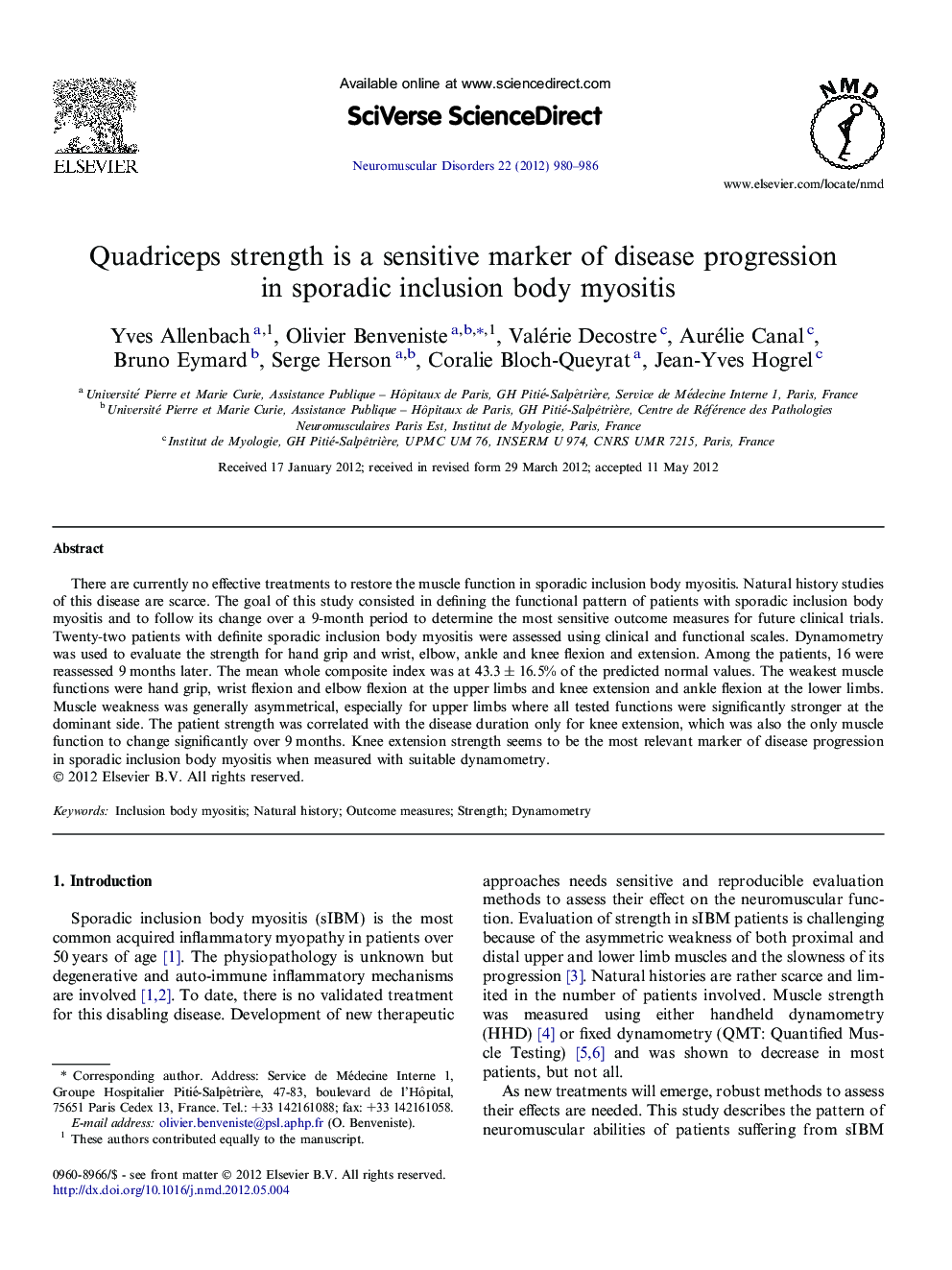| Article ID | Journal | Published Year | Pages | File Type |
|---|---|---|---|---|
| 6041271 | Neuromuscular Disorders | 2012 | 7 Pages |
Abstract
There are currently no effective treatments to restore the muscle function in sporadic inclusion body myositis. Natural history studies of this disease are scarce. The goal of this study consisted in defining the functional pattern of patients with sporadic inclusion body myositis and to follow its change over a 9-month period to determine the most sensitive outcome measures for future clinical trials. Twenty-two patients with definite sporadic inclusion body myositis were assessed using clinical and functional scales. Dynamometry was used to evaluate the strength for hand grip and wrist, elbow, ankle and knee flexion and extension. Among the patients, 16 were reassessed 9 months later. The mean whole composite index was at 43.3 ± 16.5% of the predicted normal values. The weakest muscle functions were hand grip, wrist flexion and elbow flexion at the upper limbs and knee extension and ankle flexion at the lower limbs. Muscle weakness was generally asymmetrical, especially for upper limbs where all tested functions were significantly stronger at the dominant side. The patient strength was correlated with the disease duration only for knee extension, which was also the only muscle function to change significantly over 9 months. Knee extension strength seems to be the most relevant marker of disease progression in sporadic inclusion body myositis when measured with suitable dynamometry.
Related Topics
Life Sciences
Neuroscience
Developmental Neuroscience
Authors
Yves Allenbach, Olivier Benveniste, Valérie Decostre, Aurélie Canal, Bruno Eymard, Serge Herson, Coralie Bloch-Queyrat, Jean-Yves Hogrel,
